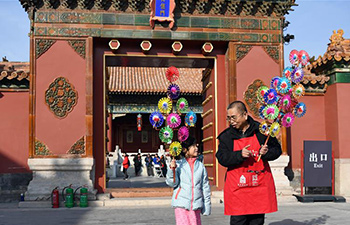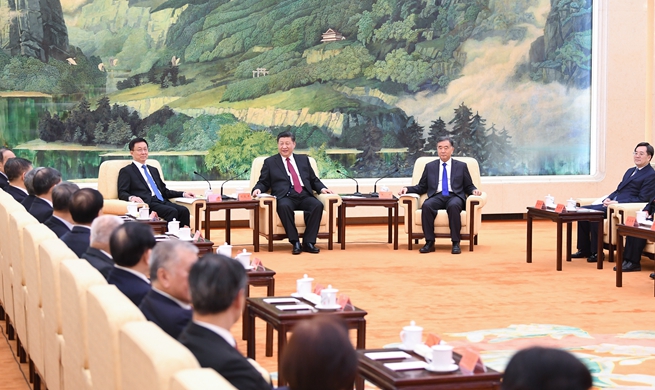ZHENGZHOU, Jan. 28 (Xinhua) -- Cotton options were listed on the Zhengzhou Commodity Exchange Monday, along with options for rubber and corn trading on the Shanghai Futures Exchange and Dalian Commodity Exchange respectively, adding to the tools available to hedge price risks in the world's major commodity market.
"The cotton options will offer enterprises in cotton-related businesses more strategies to hedge against price swings," said Zhang Biao, deputy manager of Zhongwang Industry and Trade Co., Ltd in Yuli County in northwest China's Xinjiang Uygur Autonomous Region.
The medium-sized cotton textile enterprise Zhang works for has a production base of 4,000 hectares with a competitive annual sales volume of over 15,000 tonnes.
Since 2016, Zhongwang began to take advantage of cotton futures to enhance risk management. Zhang thus has a firm belief in financial tools and holds high expectations for the new cotton options.
The cotton futures, listed on Zhengzhou Commodity Exchange in June 2004, have become one of the most sophisticated products in China's futures market.
Over the years, more cotton enterprises in China have turned to cotton futures to secure profits, enhance risk management and facilitate business operation, given that the spot commodity prices of cotton have seen frequent fluctuations in recent years.
Zhang's company was among the early attempts in Xinjiang.
China's total cotton output in 2018 reached 6.09 million tonnes, among which Xinjiang, a major cotton-producer, accounted for over 80 percent.
In 2014, Xinjiang was included in the pilot zones to reform the target price of cotton, allowing the market to play a major role in pricing.
Xinjiang boasts the country's major cotton production areas, while the processing and consumption areas are usually located in the far-off eastern and central provinces.
Cotton transportation has heavily relied on the railways and highways. Forty percent of Zhang's sales volume is sold at the cotton futures prices when he signed contracts with textile enterprises in eastern and central provinces.
Zhang said the contracts he signed are no longer "fixed price" but are determined by the cotton futures prices on Zhengzhou Commodity Exchange, allowing the sales price to remain closer to the market price.
Industry experts believe that Chinese cotton ginneries, traders and cotton textile enterprises are faced with mounting capital turnover pressure and weak capability to fend off risks.
Cotton options will help enterprises improve the efficiency of capital turnover and optimize risk management mechanisms, said an industry expert surnamed Sun.
"Cotton options, along with other financial tools including cotton futures and insurance, will contribute to the reform of the target price," said Luo Hongcheng, director of the futures department of China Securities Regulatory Commission.
Luo said cotton options would offer more support and protection for agricultural development and speed up shaping of the policy on agricultural subsidies.
Zhang believes cotton options will serve as a new and effective financial tool for cotton textile enterprises, and inject new energy into the country's cotton textile industry.

















